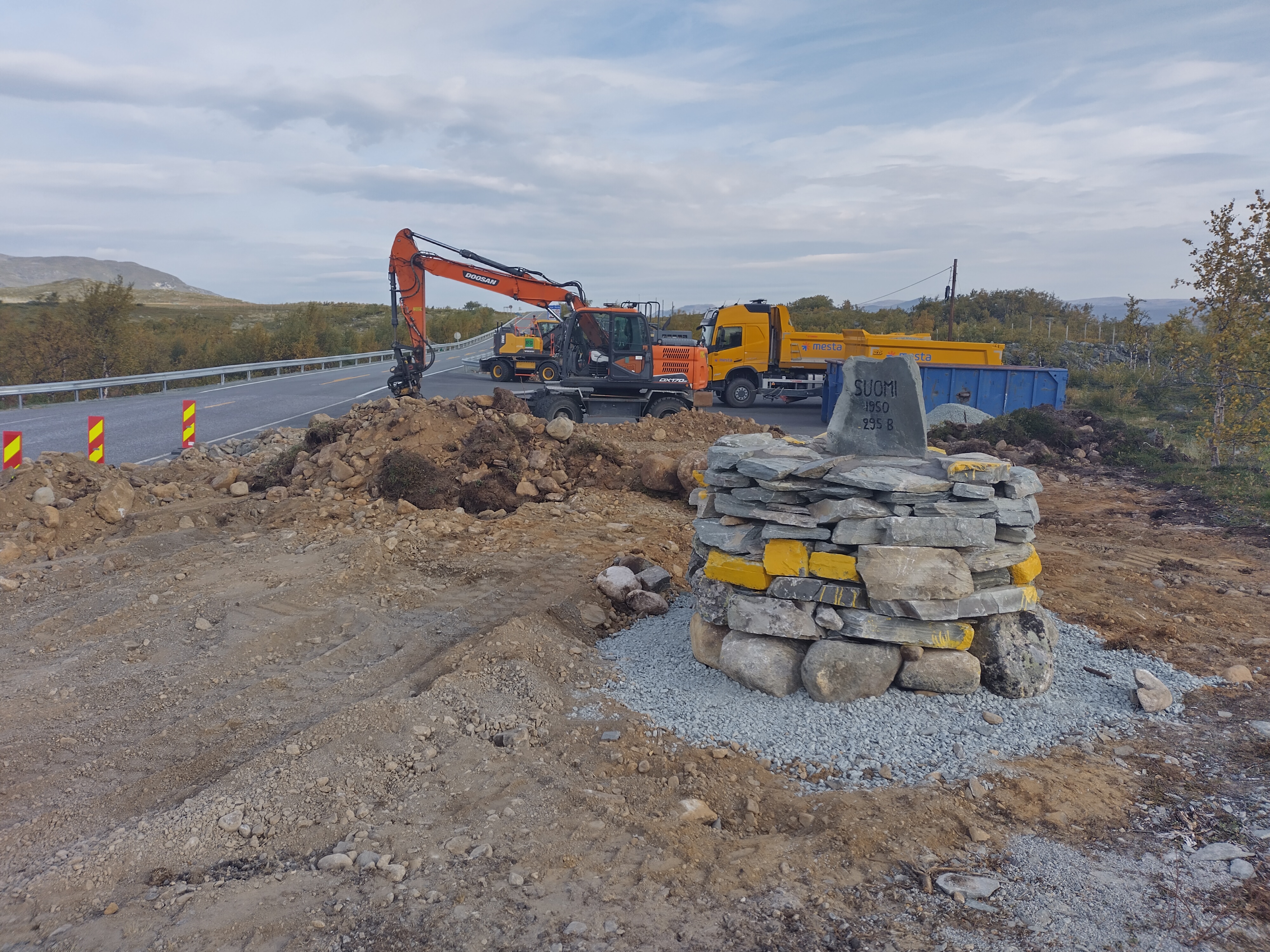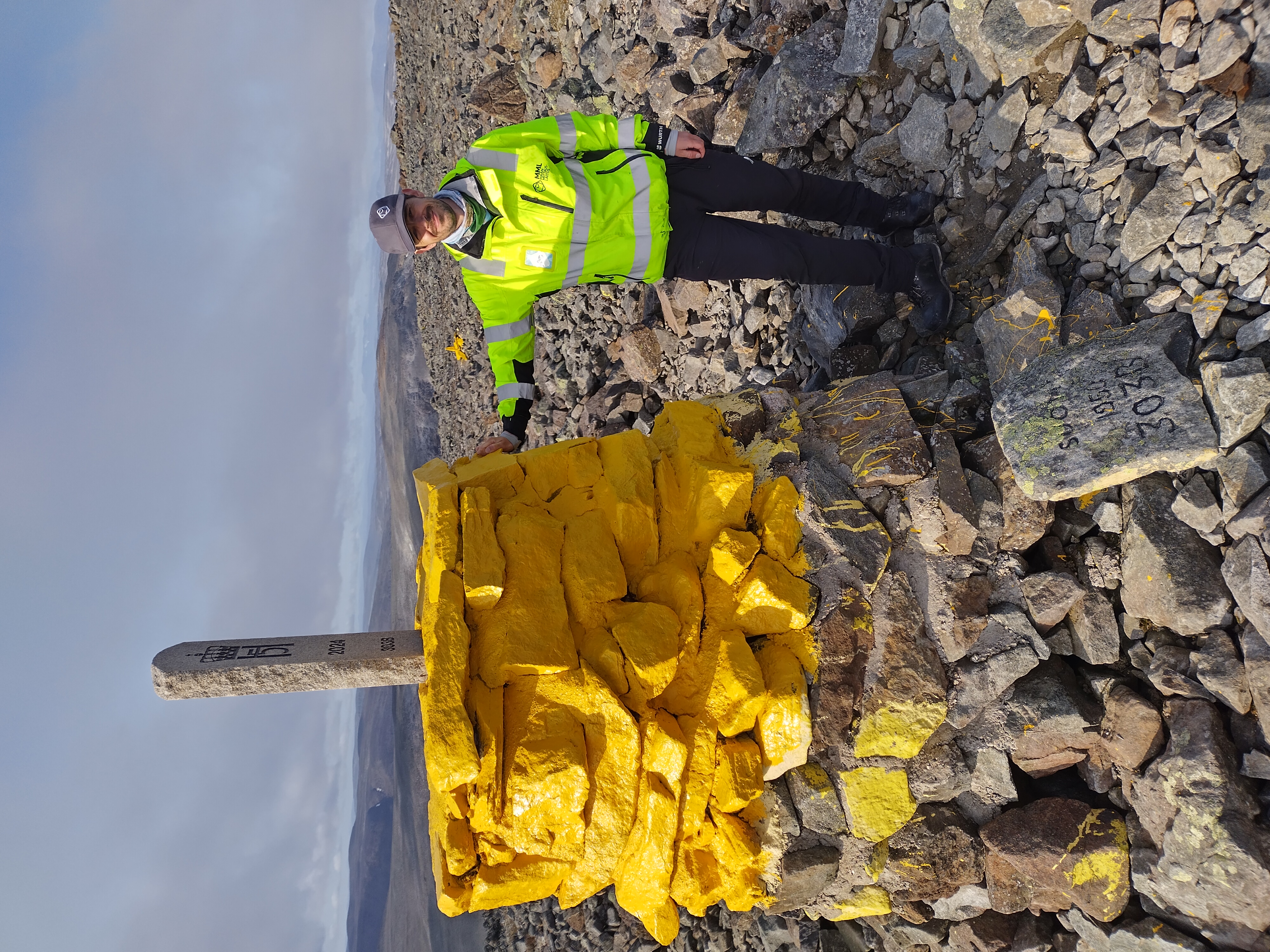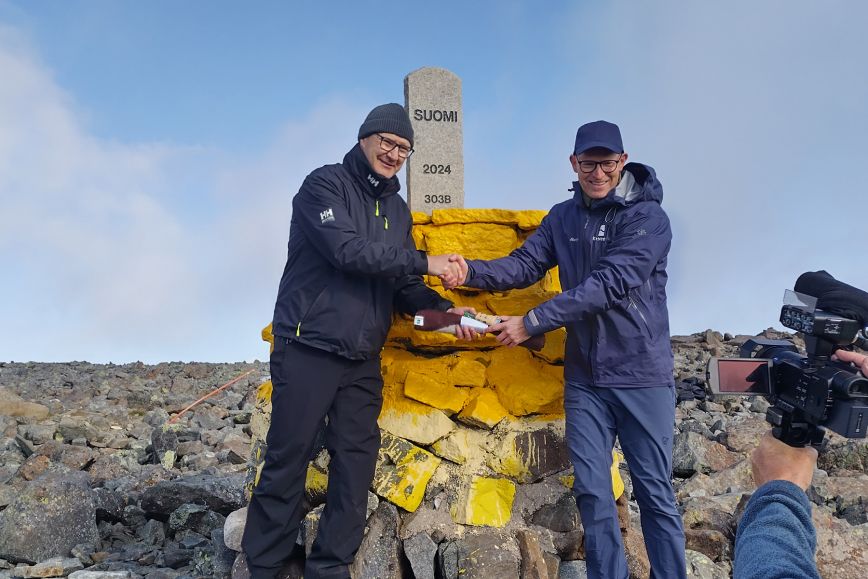‘Heartstones are to be protected and taken good care of. Checking their condition and repairing them are an integral part of cooperation. Placing the heartstone with the Norwegian authorities crowned our highly productive joint review of the state boundary,’ says Pasi Patrikainen, Director General of the National Land Survey of Finland (NLS). Patrikainen placed the heartstone with Johnny Welle, Director general of Kartverket, the Norwegian Mapping Authority.
Fieldwork to end at the beginning of September
This summer’s fieldwork consisted of border marker maintenance and documentation. In addition, border marker 295B along road E8 in Kilpisjärvi was moved some five metres farther from the road along the boundary line for safety reasons. The border marker was too close to the road and susceptible to erosion, which might have caused rocks to roll onto the road and therefore place traffic safety at risk. The mound also limited visibility to the parking area next to the border marker.
Fieldwork along the Tana river border was completed this summer. During the mapping project started last summer, the border was mapped using the deep-water channel principle, meaning that the boundary line was placed in the deepest part of the river.
All border markers will have been inspected, maintained and documented by the beginning of September, after which review documents will be finalised.
‘Fieldwork proceeded well and as planned during all these years. The review of the state boundary will be completed next year,’ says Jyrki Lämsä, Head of Cartography at the NLS.
Major General Matti Sarasmaa from the Finnish Border Guard is also happy with the joint project:
‘International cooperation between the authorities of Norway and Finland has been an excellent success, and the review of the state boundary has been carried out appropriately. Border markers have been painted and maintained, and now they stand out from other terrain features. The border corridor between Finland and Norway was also cleared tidier. Of course, we will continue to maintain the border area between reviews,’ Sarasmaa says.


What is the review of the state boundary all about?
Carried out every 25 years, the review of the state boundary is a significant part of close relations between neighbours. During review, the condition of the border area and border markers is inspected. The national land border is not moved in any direction. The Finnish and Norwegian border commissions carry out their activities under national ministries for foreign affairs, and their results will be documented for use by the ministries.
The NLS participates in the review of the state boundary by adopting an operative role. In practice, NLS employees participate in surveying and other fieldwork, documentation and communication. The Finnish Border Guard takes care of maintenance, including the repair of any border markers that have collapsed or are in need of new paint, and the arrangement of transport to the border area.
For further information
Jyrki Lämsä, Head of Cartography, tel. +358 40 524 2508, firstname.lastname@nls.fi (contact primarily by email or text message due to fieldwork)


